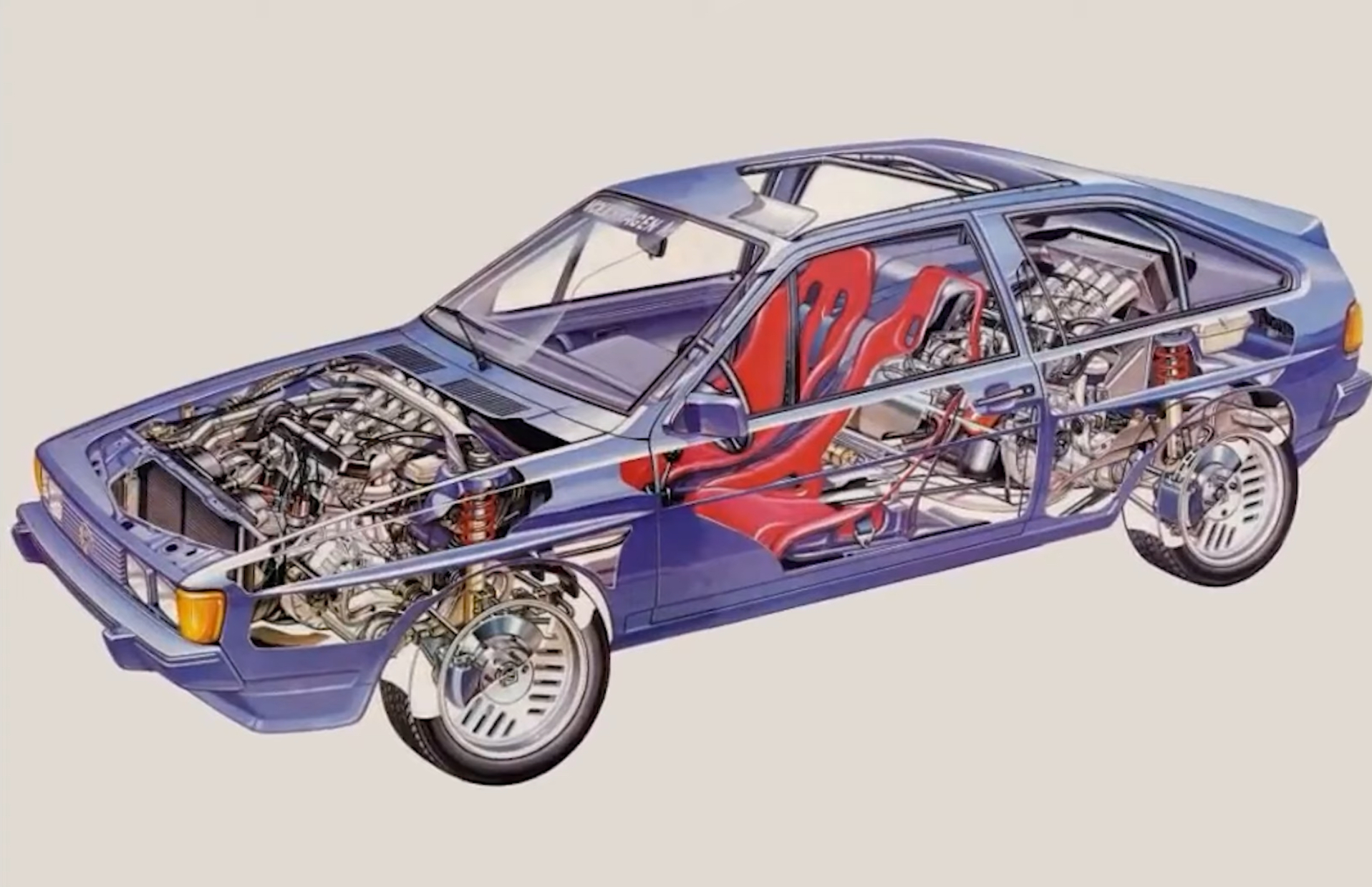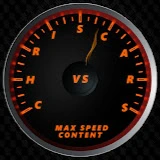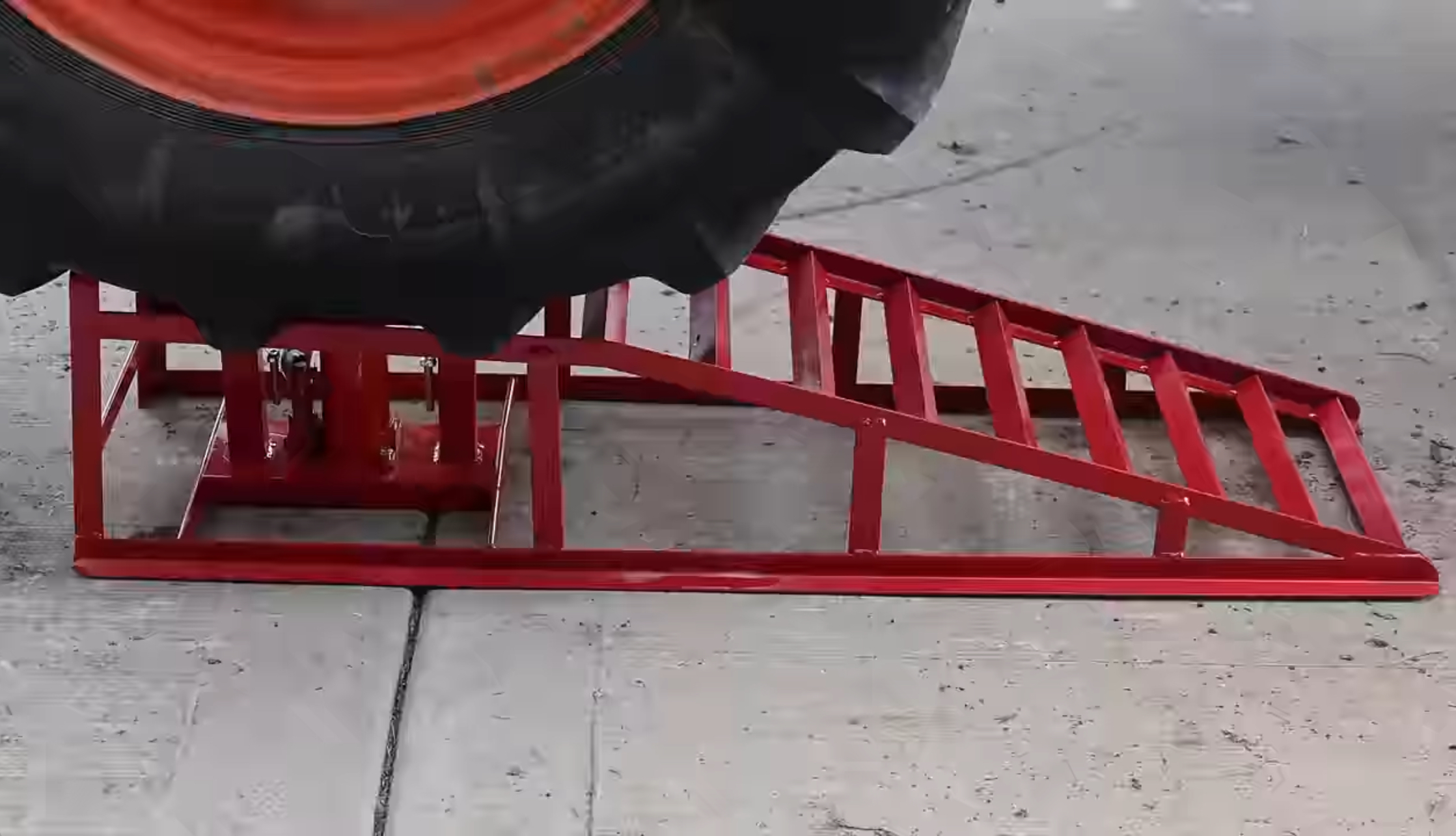The 1980s were a golden era for rally enthusiasts, an age when motorsport saw some of the most extreme and experimental vehicles take to the tracks. Among these wild creations was a little-known marvel from Volkswagen: the Scirocco Bi-Motor. This twin-engine hot hatch was a bold and inventive attempt by VW to make a name in the world of Group B rallying. Despite its radical design and potential, it never made it to production. Let’s dive into the history of this forgotten gem and explore why it still captures the imagination of car enthusiasts today.
The Birth of the Scirocco Bi-Motor
Volkswagen’s journey to create the Scirocco Bi-Motor began in the early 1980s, a time when rallying was undergoing a technological revolution. The introduction of the Audi Quattro with its groundbreaking all-wheel-drive system had forced other manufacturers to rethink their strategies. Amid this innovation race, VW Motorsport’s head, Klaus-Peter Rosorius, saw an opportunity for Volkswagen to break free from its reputation as a producer of “people’s cars” and enter the competitive world of high-performance rallying.
But there was a catch. Unlike Audi, Volkswagen’s budget for motorsport was tight, and upper management was hesitant to invest in developing a conventional all-wheel-drive system. This led Klaus and his team to think outside the box, ultimately deciding to use a twin-engine setup, with one engine mounted on each axle. This radical configuration effectively turned the Scirocco into an all-wheel-drive vehicle without the need for a traditional drivetrain.
The Twin-Engine Concept
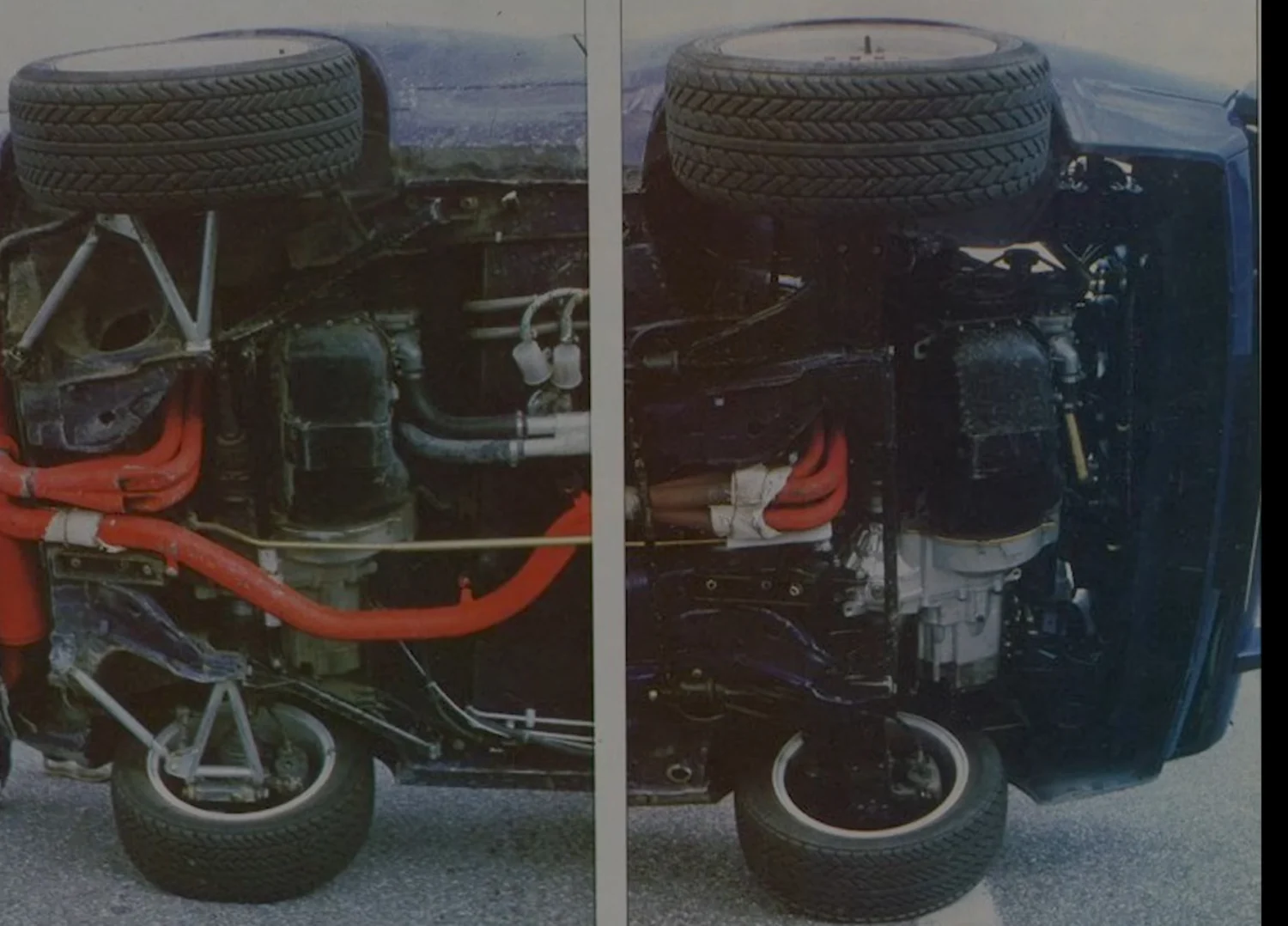
The idea of using two engines in a single car was as ingenious as it was risky. The first Scirocco Bi-Motor prototype, built in 1983, featured two 1.6L inline-four engines borrowed from the Mk1 Golf GTI. Each engine produced 110 horsepower, bringing the car’s total output to 220 horsepower—impressive for a small hatchback in that era.
To make this unusual setup work, Volkswagen engineers developed a complex system called EGAS, which synchronized the two engines and gearboxes. This allowed the car to be driven with a single set of pedals and a single gear shifter, making it possible for the driver to control both engines as if they were one. Additionally, the car’s chassis was heavily reinforced to accommodate the second engine in the rear, and the suspension was upgraded with Bilstein competition shocks to handle the extra weight and power.
The Evolution of the Bi-Motor
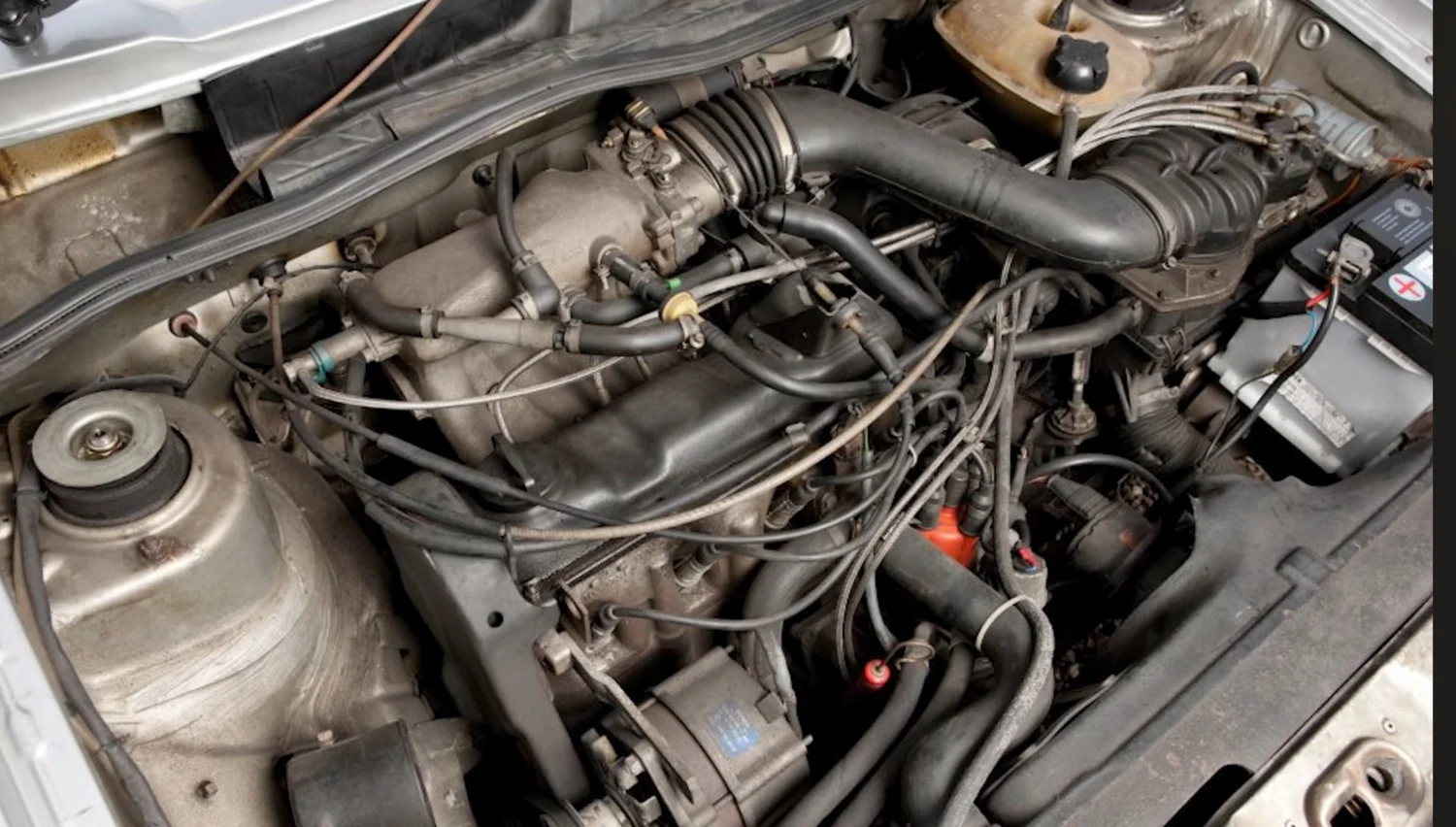
As the project gained momentum, the engineers saw potential for more power. By 1984, the second Scirocco Bi-Motor prototype emerged, now equipped with two 1.8L engines, each producing 180 horsepower for a combined output of 360 horsepower. This made the Bi-Motor significantly more powerful than the Audi Quattro road car, which had about 302 horsepower at the time.
The new prototype also received a more aggressive look, featuring wider fenders and other visual enhancements that set it apart from a standard Scirocco. These upgrades were intended to gauge public interest in a possible limited-run homologation special that would allow Volkswagen to compete in Group B rallying.
The End of the Line
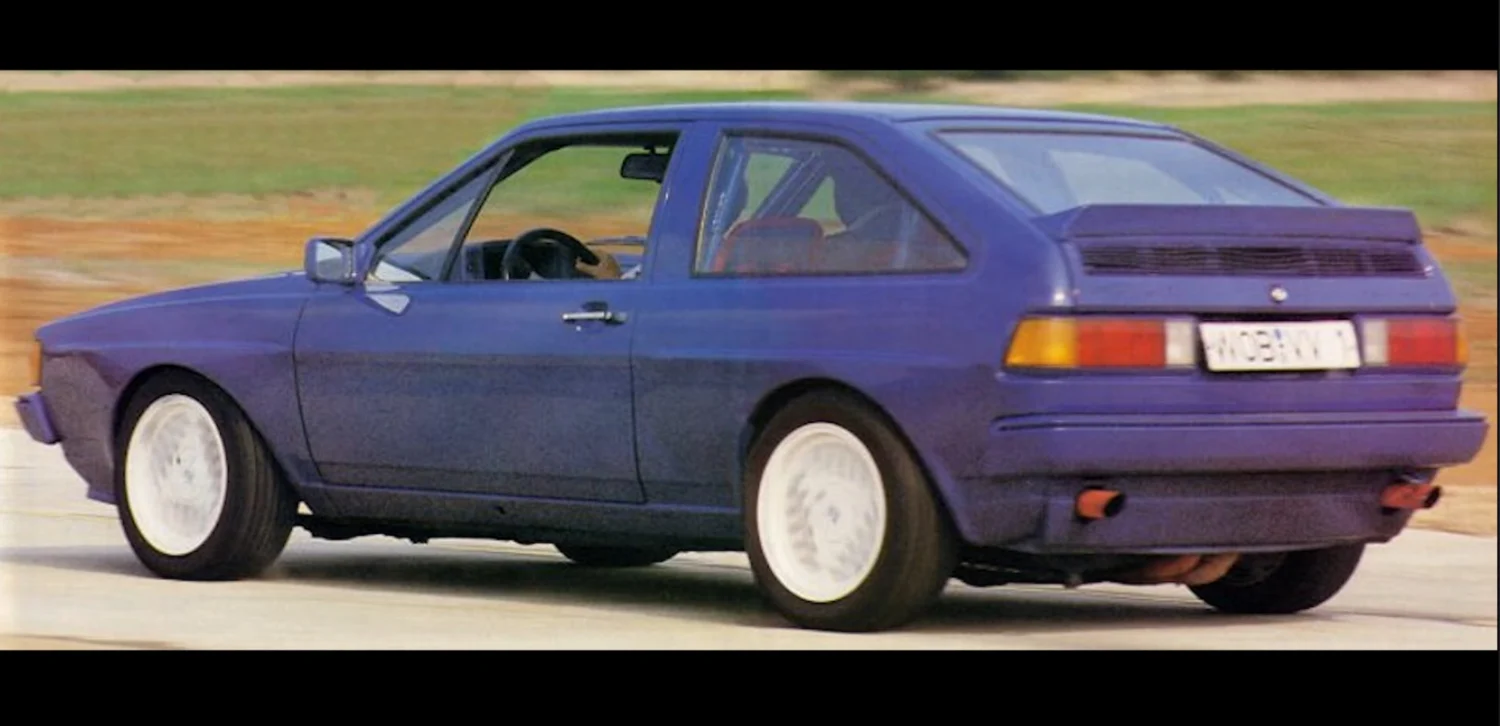
Despite the promising performance and initial enthusiasm from Volkswagen’s management, the Scirocco Bi-Motor project eventually hit a dead end. By 1985, Group B rallying had become infamous for its extreme danger, with multiple fatalities drawing increased scrutiny from motorsport governing bodies. When word reached the FIA (Fédération Internationale de l’Automobile) about the Bi-Motor’s development, the organization expressed strong reservations about allowing a twin-engine car to compete, despite there being no explicit ban in the rules.
Faced with the prospect of not being able to race, Volkswagen decided to pull the plug on the project. The Scirocco Bi-Motor prototypes never saw the rally stages, and instead, they found their place in Volkswagen’s museum, where they remain a testament to the brand’s brief flirtation with rallying madness.
Legacy and Fascination
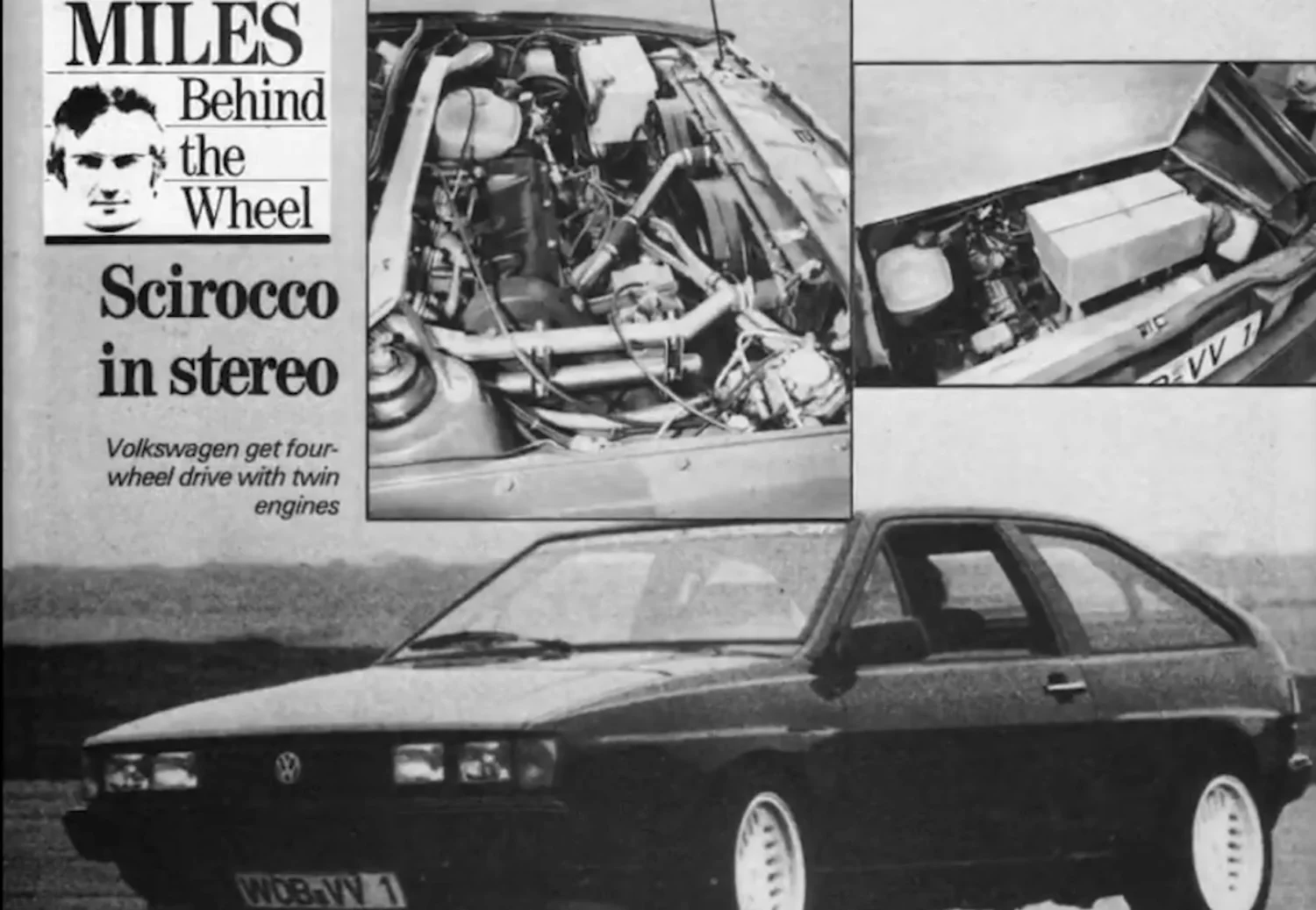
Although the Scirocco Bi-Motor never became the rally icon it was intended to be, its story remains one of the most fascinating chapters in Volkswagen’s motorsport history. The concept of using two engines to achieve all-wheel-drive was both crazy and ingenious, showcasing the creativity and engineering prowess of VW’s team even in the face of corporate reluctance and limited resources.
The Scirocco Bi-Motor may have been sidelined, but its spirit lives on as a reminder that sometimes, even the most outrageous ideas can come remarkably close to reality. Enthusiasts still marvel at the prototypes in Volkswagen’s museum, imagining what could have been if this wild hatch had been allowed to show its true potential on the rally stages.
Let the Debates Begin
For gearheads and rally fans alike, the Scirocco Bi-Motor serves as a unique piece of automotive history—a car that was ahead of its time and, for a brief moment, dared to challenge the norm with an audacious vision. So, what do you think? Was the twin-engine design a stroke of genius, or just a crazy way to make an all-wheel-drive hatch?

